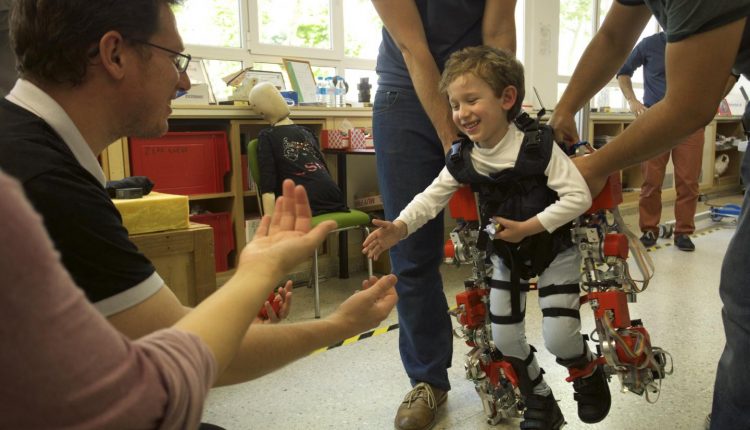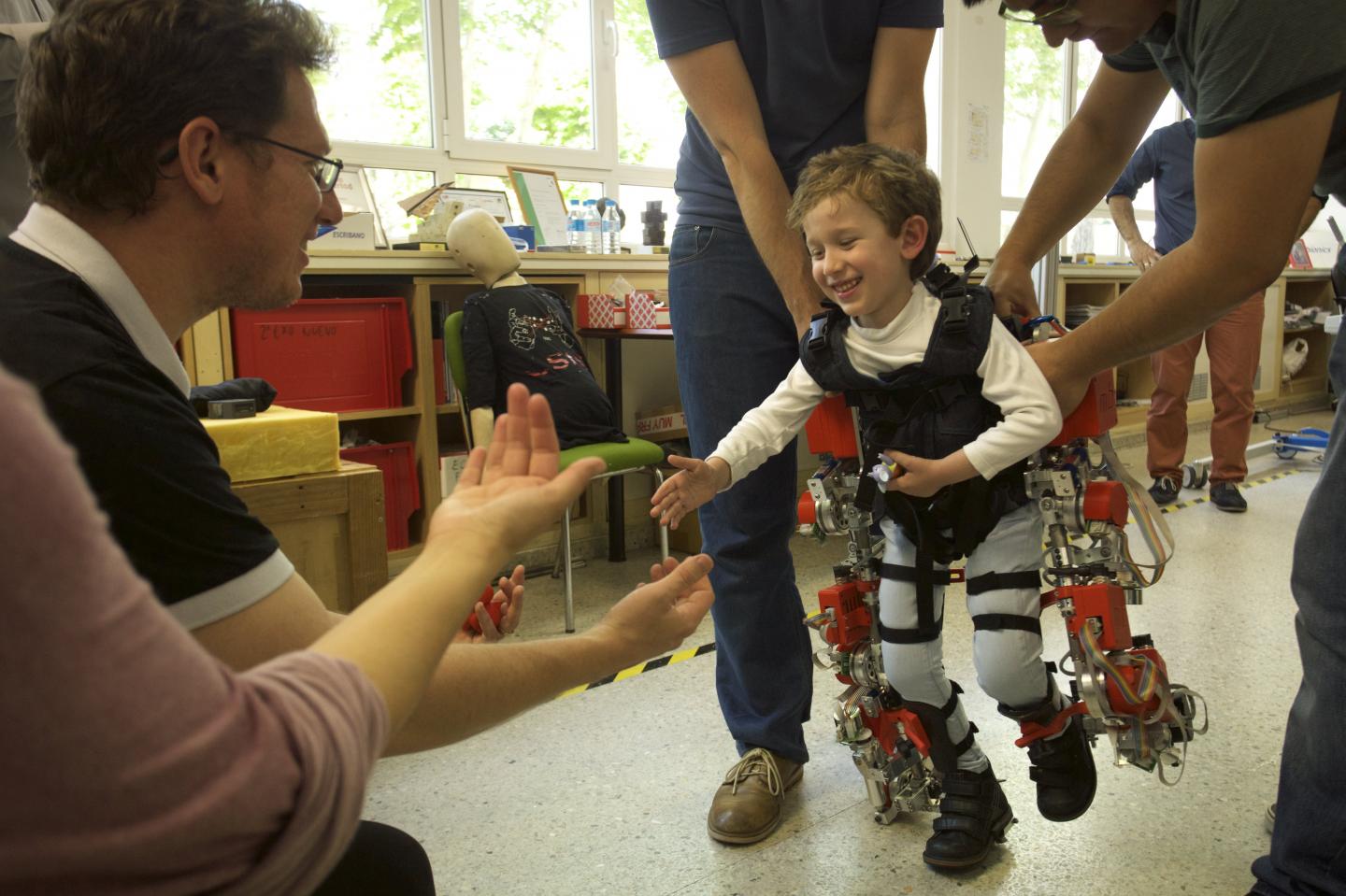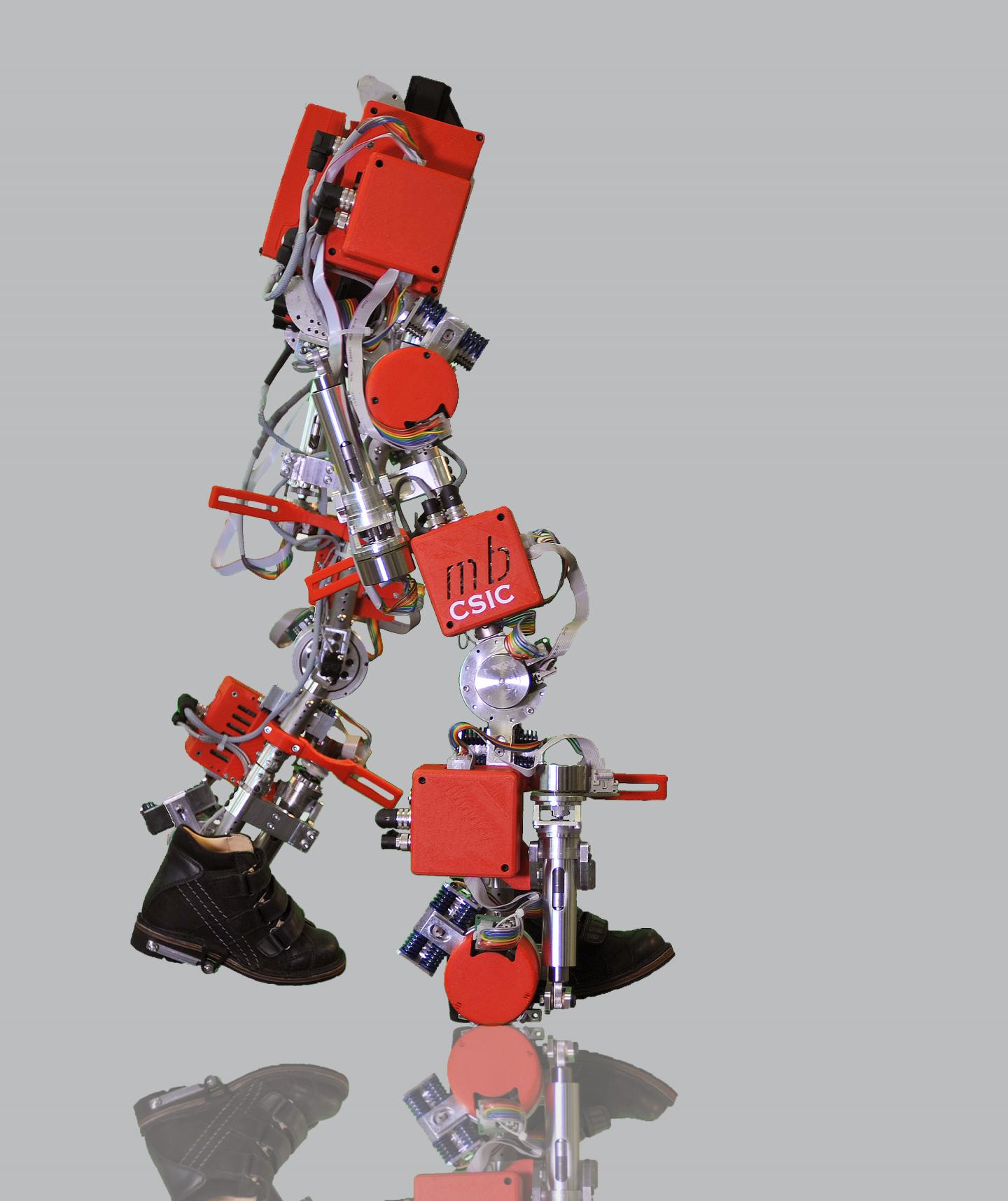
Although a rare disease, spinal muscular atrophy is one of the most serious degenerative neuromuscular diseases in children. Oftentimes, it results in high rates of mortality in babies and children that are affected. The genetic disease causes progressive general muscular weakness which leaves children with the inability to walk, which can lead to even more drastic effects such as lung dysfunction.
That’s why a new technology patented and licensed by the Spanish National Research Council (CSIC) and its spin-off company Marsi Bionics is so critical.

CSIC has developed an exoskeleton that helps children to walk and aims to prevent the setting in of sclorosis, which results from a loss of agility.
The exoskelton, currently in the pre-clinical phase, will also be used in physiotherapy in hospitals to prevent the secondary effects associated with the loss of mobility in this illness.
What is it?
The brace consists of long support rods which are adjusted to fit around a child’s legs and torso. The joints contain a series of motors that mimic human muscles and provide the child with the necessary strength to stand upright and walk. Additionally, a series of sensors, a movement controller, and a battery with five hours of life are included to complete the system.

“The number one drawback in developing this type of pediatric exoskeleton is that the symptoms of neuromuscular illnesses – such as spinal muscular atrophy- change over time, as much in the articulations as in the body.That’s why it’s fundamental to have an exoskeleton capable of independently adapting to these changes. Our model includes intelligent joints which alter the brace’s rigidity automatically and adapt to the symptoms of each individual child at whenever required”, said Elena Garcia, from the Automatics and Robotics Centre, a CSIC/Politechnic Univerity of Madrid.
The exoskeleton was developed for children between the ages of three and 14.
García and the team hope that the device will help patients walk and, as a result, prevent the setting in of scoliosis, as well as the chain of resulting conditions caused by the inability to stand upright and walk.

Comments are closed, but trackbacks and pingbacks are open.